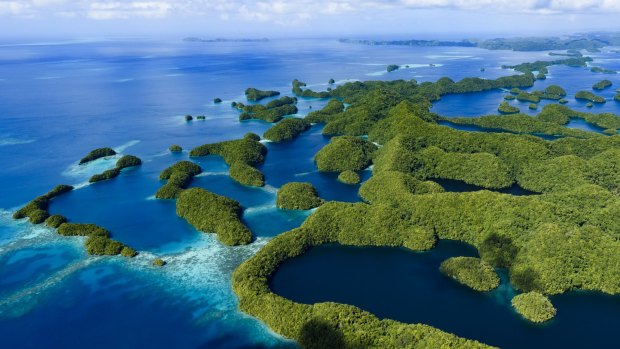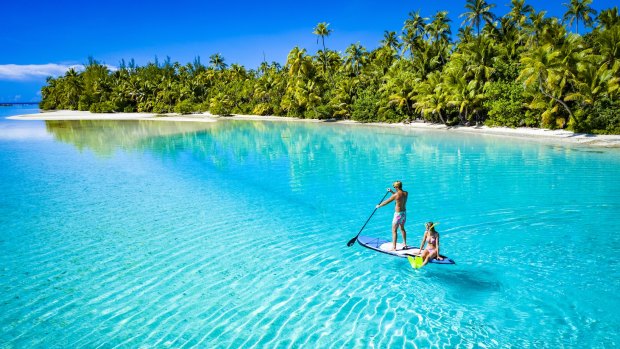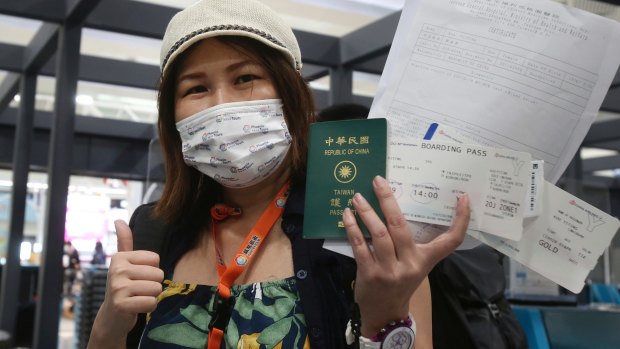This was published 2 years ago
Countries with no COVID-19 cases: The places that avoided coronavirus completely (so far)
By Michael Gebicki

An archipelago of 500 islands located south-east of the Philippines, Palau relies heavily on tourism for its dollar income, yet the island-state bolted the door to visitors in late March 2020 and only re-opened in May 2021 with strict controls.Credit: iStock
How does a country dodge COVID-19? The list of countries that have been untouched by COVID-19 so far is small. Most are remote and lightly populated islands, overwhelmingly in the Pacific Ocean. As sovereign countries, that excludes some remote islands such as the Pitcairn Islands group and Tristan da Cunha, both British Overseas Territories, and Tokelau, a dependency of New Zealand, despite having no recorded cases. It also excludes American Samoa, both as an unincorporated US territory and as having recorded COVID-19 cases in the past, although the case figure is currently zero.
North Korea claims zero cases, so does Turkmenistan, but these claims are hard to verify.
The Cook Islands

Credit: Cook Islands Tourism
Despite an economy heavily dependent on tourism, and a significant population of Cook Islanders domiciled in New Zealand, the Cook Islands shut the door quickly, effectively self-isolating from March 2020. Incomes fell but there were benefits as people reverted to a more self-sufficient lifestyle, planting gardens and fishing, and COVID-19 was kept at bay. The Cook Islands' travel bubble with New Zealand began on May 17, 2021, but only those who have been in New Zealand for at least 14 days prior to departure are allowed to enter. The travel bubble that allows free travel between Australia and New Zealand has been suspended until late September.
Niue
At the centre of a triangle formed by the Cook Islands, Tonga and Samoa, Niue is small, lightly populated and less dependent on tourism than most of its Pacific Island neighbours. Pre-pandemic, Niue's only scheduled passenger connection to the outside world was a twice-weekly flight from Auckland. In April 2020 the island reduced the incoming service to one per week, restricting passengers to repatriate islanders and essential service personnel. All arrivals have been subject to a 14-day quarantine, and the island has recorded no cases of COVID-19.
Palau

Credit: AP
An archipelago of 500 islands located south-east of the Philippines, Palau relies heavily on tourism for its dollar income, yet the island-state bolted the door to visitors in late March 2020 and only re-opened in May 2021 with strict controls. Currently only fully vaccinated travellers are allowed to enter, with proof of a negative PCR COVID-19 test taken within three days of departure for Palau. Visitors and non-residents must stay at a Pandemic Certified establishment for five days after arrival and wear a face mask during that period. A traveller who arrived in May 2021 was found to have the virus, despite a negative test pre-departure for Palau, but that was established as a past infection, contracted overseas in January 2021, with the patient fully recovered
Tonga
The island group declared a state of emergency in March 2020, shutting the borders to all foreign nationals until August 2021. Tonga's tourism industry, which welcomed 94,000 tourists in 2019, was shattered, although the islands' 100,000 residents have not experienced a single case of COVID-19. One curious side effect has been explosion in Tonga's canine population, The foreign veterinarians from New Zealand who operated its dog sterilisation program have been excluded, and the main island of Tongatapu is estimated to have more than 20,000 dogs.
Tuvalu
Tuvalu consists of nine low-lying reef islands and atolls about midway between Hawaii an Australia. As early as January 2020 the Tuvalu Government convened a COVID-19 Health Taskforce, imposing a state of emergency from March and shutting the borders to all aircraft and vessels, with only the prime minister able to grant exemptions for incoming medical, food, fuel and other emergency supplies. The State of Emergency applies until November 6, 2021.
Nauru
One of the world's smallest countries, Nauru started banning travellers in early March 2020. In mid-March the island instituted a capture and containment policy, suspending all flights apart from a Brisbane service, operating on a reduced schedule of one flight per fortnight. All arrivals since have been required to undergo 14 days in hotel quarantine. However, the country's high vaccination rate means that it is a likely candidate to become New Zealand's second Pacific travel bubble.
The formula for stopping coronavirus
All the countries with zero cases of COVID-19 are remote, but by itself, remoteness does not necessarily convey immunity. The Faroe Islands, halfway between Norway and Iceland, currently has 979 cases, in a population of 52,000. The first case was detected in March 2020, an infected traveller arriving from Paris. By August 2020 the Faroe Islands had more cases per capita than anywhere else in Europe.
The Falkland Islands, almost 500 kilometres east of Argentina, with a population of less than 3000, has seen 63 cases, all recovered. Frequent flights from the UK maintain the Falklands' 1300-strong British military garrison, and a British Forces member was tagged as the islands' first case.
Small plus remote gives you a winning edge but neither is it a failsafe moat against COVID-19. Wallis and Futuna, 140 square kilometres of dry land 280 clicks northeast of Fiji, has over 450 cases, in a population of just 12,000. As a French overseas collectivity, administrators and teachers come and go to these remote islands. In addition, some 21,000 residents of the more prosperous French collectivity of New Caledonia trace their origins to Wallis and Futuna, and travel back and forth regularly. The first local case of COVID-19, detected in early March 2021, seeded a spiralling infection rate. Within four days the islands had recorded 55 cases.
All the countries with no infections have factors in common; all recognised the threat of the SARS-CoV-2 virus, responded quickly and shut the door to the rest of the world. Most of those islands have sacrificed their tourism income in the process. For many that's the mainstay of their economy, but the loss of tourism dollars has been easier to bear than allowing the novel coronavirus to run riot.
See also: Are Australia's lockdowns really that harsh? How the world compares
See also: Will AstraZeneca mean some Australians are unable to travel overseas?
Sign up for the Traveller newsletter
The latest travel news, tips and inspiration delivered to your inbox. Sign up now.